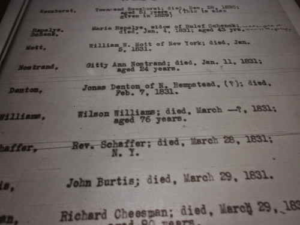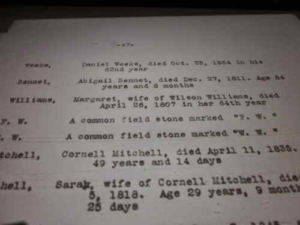Originally published on genealogyatheart.blogspot.com on 14 May 2015.
Finding documents with conflicting info is common. Determining which information is correct takes careful analysis.
Lisa Lisson’s article in Crestleaf about the Top 10 Mistakes to Avoid When Researching Your Family’s Genealogy notes that you can’t believe everything you read. (Check it out here.)
Although Lisa’s referring to documents, I had to laugh when I read the following headline in the Tampa Tribune, one of our local newspapers:
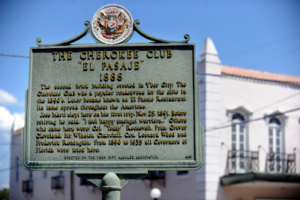
The marker states that Jose Julian Marti Perez, a Cuban poet and political theorist, slept at the Cherokee Club in 1891 on his first visit to Tampa. Problem is the Cherokee Club wasn’t opened until March 25, 1896, months after he had died in 1895 in Cuba. Oops! Evidently when the plaque was installed in the 1960’s no one checked for accuracy. Several members of the Florida State Genealogy Society have written that they have errors in plaques in their counties, as well. I don’t know why it never occurred to me that a plaque could be wrong; I assumed that someone somewhere had done the research. Apparently they did but the information was still wrong. A well respected Tampa historian, Anthony Pizzo was interviewed 30 years ago about the plaques that are all over town. The project began in the 1940’s. “Mr Bock at the time was the director of the Military Institutes of Cuba. He volunteered to make the historical markers at the military foundry and put them all over Ybor City. He said, ‘All you need to do is the research and write them up.’ We were beside ourselves – what a fantastic deal! So I took it upon myself to find out as much as I could, and I started to interview oldtimers, Cubans who were in their 80’s and 90’s. What I learned from them was unbelievable-that we had such a rich history. Then I started meeting historians in Havana, and one of the friends I really admired very much was Jose Rivero Muniz. He had written many books-he wrote Conquistadors En La Florida and Los Cubanos En Tampa, which I cherish!”2 Pizzo added, “The first marker was erected in front of the Ybor factory. It is a beautiful stone put up by the Ybor City Rotary Club. I think it was in 1949. That was the first one. And of course when Castro took over our project became paralyzed.”3 A local foundry agreed to cast the plaques at a discount and individuals donations poured in. “I quess I personally have been involved in putting up more than forty historical markers not only in Ybor City but all over Tampa.”4 Makes you wonder how many other plaques contain errors.
The story made me want to discover where Marti spent his first nights in Tampa. First I went to the Hillsborough County Property Appraiser site to verify the building date but the construction details just note Pre-1940 Commercial. Tampa was incorporated in 1849 but the area where this building is located was not in the city limits. At the time, it was an unincorporated area. The current building, now on the National Register for Historic Places, was built as an exclusive men’s club and to house the offices of Vicente Martinez Ybor (pronounced Ee’ bor) the planner of Ybor City, which is now part of Tampa. I guessed that Marti slept in a hotel that was at that site before the Cherokee Club was built. I found the deed information in the Library of Congress records:
“Original and subsequent owners: The building is located in the Ybor City subdivision, Block 31, lots 6 through 10. The title records for this building, supplied by Chelsea Title and Guaranty Company, Tampa, Florida, are as follows:
1886
Deed recorded December 1, 1886, filed February 24, 1887 Book W, page 572 W. Wells and wife to Vincent Martinez Ybor, lots 6,7,8
1886
Deed recorded December 1, 1886, filed February 24, 1887 Book W, page 572 W. Wells and wife to Vincent Martinez Ybor and wife
1887
Deed recorded January 25, 1887, filed June 18, 1887 Book X, page 64 Vincent Martinez Ybor and wife to Ybor City Land and Improvement Company”5
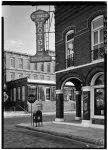
“The Cherokee Club, built by the Ybor Land and Improvement Company and opened March 25, 1896, was the most exclusive men’s club in the city. This club was unique in that its members combine persons of Latin and American heritage. The object of the club was to promote social intercourse of its members. The popular pastimes in the club were relaxation, entertainment and gambling.
In 1924 Jose Alvarez bought the club and operated it as a restaurant and hotel called the El Pasaje. Although the club was closed during the prohibition, the restaurant and the bar were the center for many luxurious banquets.“7
My guess was wrong – there was no hotel on the site during Marti’s first visit to Tampa. That location was a vacant lot. Unless Marti camped out on the grounds, which I doubt as the mosquitoes would have eaten him alive and then he may have contracted malaria, he had to have slept somewhere else.8
Marti arrived in Tampa and was received by “Carbonell on the morning of November 26, 1891. That day lunch at the guest house Leonela Nestor, who had great memory, and narrated details of the war…”9
“We do not remember days, we remember moments” -Cesare Pavrese
Leonela Nestor may have had a great memory of the war in Cuba but he didn’t have a very good memory of dates. Either he got the day of the week or the day of the month wrong. I suspect it was the day of the month as Marti must have arrived on November 25 and not the 26 because in the evening, Marti gave a lecture at the El Liceo Cubano, 1300 7th Avenue, a social and political club founded in 1886.10 His speech was so well received that “after a time they carried Marti off literally on their shoulders through the streets of Ybor City in the early hours of a Thursday morning singing the Ten Years’ War-era hymn of independence known as the ‘Bayamo Anthem’ and eventually delivering him to the door of host Nestor Carbonell.”11
In 1891, the 26th was a Thursday so it is most likely that Marti arrived in Tampa on the 25th.12
Although the newspaper article doesn’t cite its source, I did find a reference for Marti staying in a boarding house owned by Ramon Rubiero de Armas.13 I think it’s more likely that Marti stayed at the home of his host, Nestor Carbonell. We know, “that the next day, November 27, (the 26th) again at the home of Leonela Nestor, both discussed details related to the future creation of the Cuban Revolutionary Party.”14
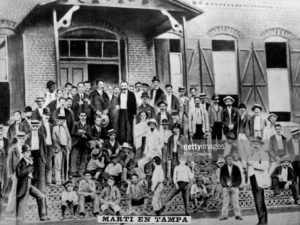
p, pre {margin: 0;} input.blogger-ie-hack {position: absolute; left: -9999px;}hr.more {border-width:1px 0 0 0; border-style:dashed; border-color: #666; height: 8px; background:#ddd}table.tr-caption-container {padding: 6px; margin-bottom: .5em} td.tr-caption {font-size: 80%; padding-top: 4px} img {cursor: move}body {margin: 8px 16px;}
Marti was invited to speak that evening by the Cuban Patriotic League in remembrance of the anniversary of the execution of 8 medical students. The event was also held at the Liceo Cubano. After the speech, Marti is said to have “drafted documents related to the future Party” on Nestor Leonelo’s desk.15
Marti departed Tampa on November 28 after receiving a farewell toast at the El Liceo where his previous evening’s writings were read to the attendees.
If Marti did not stay with Carbonell, he certainly spent much time at his home.
Who was Marti’s host, Nestor? Nestor Carbonell Leonelo Figueroa was a journalist and teacher turned Captain of the Cuban Liberation Army who considered himself a “socialist, though he never specified of what school.”16
Nestor emigrated to Key West from Cuba in 1888 but was forced to leave due to his political views. Arriving in Tampa with his 3rd wife and 8 children, Nestor was aided by friends to open a school, publish a newspaper, La Bate, and serve as a librarian and treasurer of the newly formed Revolutionary Club, the purpose of which was to raise funds to liberate Cuba from Spain. A club member had heard Marti lecture in Philadelphia and recommended that he be invited to Tampa to speak at a fundraiser for the Revolutionary Club. By May 1891, Nestor was named president of the club and extended the invitation to Marti to come to Tampa.
Carbonell writes of Marti “Hence, when from a group of Cubans (from) Tampa invites you to take participation in an evening, you accept the invitation.”17
So where did Nestor live in Tampa? Since there is no 1890 US Federal census record for Tampa I looked for city directories. The Tampa Public Library’s oldest directory is from 1906. The Tampa History Museum has a slim volume from 1893 but you must make an appointment to view it through the Tampa Public Library. I have an appointment for next Monday and I’ll share with you what I discover.
The Tampa Tribune article notes that there were other errors in the plaque. You can read it in its entirety here:
I’m challenging you to check out a plaque in your community and let me know what you find. Wouldn’t this be an interesting project for a local genealogy group, historical society or a social studies class? I don’t think I’ll ever look at plaques the same.
___________________________________
1“José Martí Historical Marker outside Ybor Building Is Wrong.” TBO.com. 1, 10 May 2015. Web. 11 May 2015.
2″Tony Pizzo’s Ybor City: An Interview With Tony Pizzo.” Tampa Bay History7.2 (1985): 142-60. Print.
3Ibid
4″Tony Pizzo’s Ybor City: An Interview With Tony Pizzo.” Tampa Bay History7.2 (1985): 142-60. Print.
5Fl-271, Habs Ho. “Cherokee Club (El Pasaje).” Historic American Buildings Survey (n.d.): n. pag. Library of Congress. Web. 13 May 2015.
6“Prints & Photographs Reading Room | Prints & Photographs Division – Library of Congress.” Prints& Photographs Reading Room | Prints & Photographs Division – Library of Congress. N.p., n.d. Web. 13 May 2015.
7Fl-271, Habs Ho. “Cherokee Club (El Pasaje).” Historic American Buildings Survey (n.d.): n. pag. Library of Congress. Web. 13 May 2015.
8Altonen, Brian. Public Health, Medicine and History The 1890 Census Disease Maps.
9“Néstor Leonelo Carbonell Figuerosa.” EcuRed. N.p., n.d. Web. 13 May 2015.
10 Rajtar, Steve. A Guide to Historic Tampa Florida. Charleston, SC: History: 169, 2007. Print.
11Lopez, Alfred J. Jose Marti: A Revolutionary Life. Austin: University of Texas Press: 253, 2014. Print. Information taken from Hildago Paz. Jose Marti 1853-1895, 144-145.
12″November 1891 Calendar.” November 1891 Calendar. N.p., n.d. Web. 13 May 2015.
13Wright, E. Lynne. It Happened in Florida Remarkable Events That Shaped History. Guilford, CT: Globe Pequot: 62, 2010. Web. 13 May 2015.
14“Néstor Leonelo Carbonell Figuerosa.” EcuRed. N.p., n.d. Web. 13 May 2015.
15Ibid
16Casanovas, Joan, and Joan Casanovas. Bread or Bullets!: Urban Labor and Spanish Colonialism in Cuba, 1850-1898. Pittsburgh: U of Pittsburgh: 217, 1998. Print.
17Carbonell, Nestor. PROCERES. Ensayos Biográficos. Havana: Montalvo y Cárdenas,1928. Print.
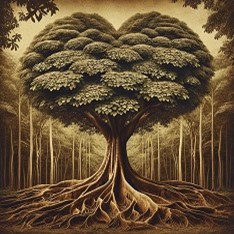
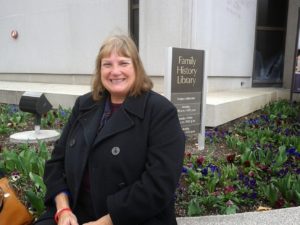
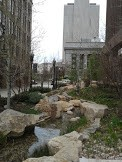
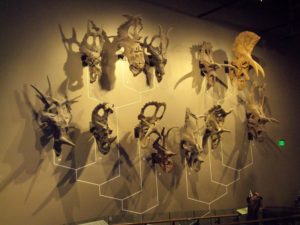
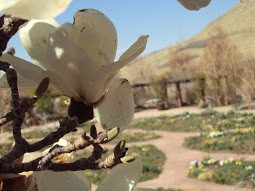
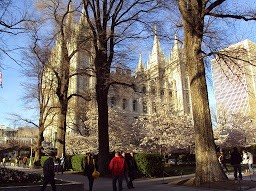


 Sometimes in genealogy we get so consumed with the names, places, and dates of our ancestors that we overlook the details that tell us much about their character.
Sometimes in genealogy we get so consumed with the names, places, and dates of our ancestors that we overlook the details that tell us much about their character.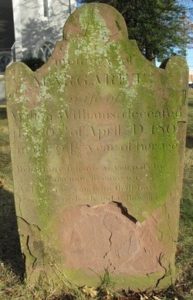 We know this is our Margaret because the death date, spouse’s name and her name match the church burial record of Frost’s transcription.
We know this is our Margaret because the death date, spouse’s name and her name match the church burial record of Frost’s transcription.
